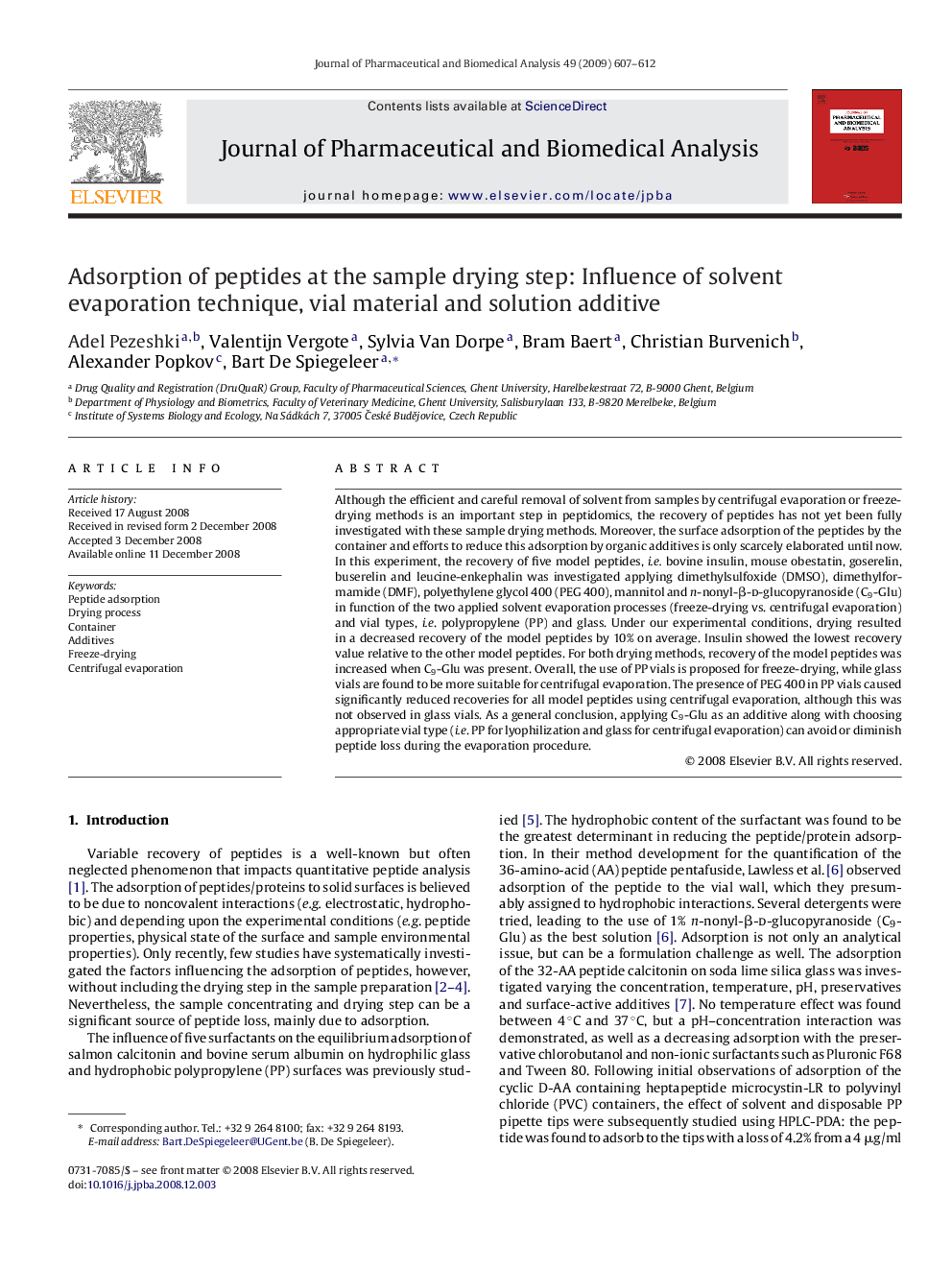| کد مقاله | کد نشریه | سال انتشار | مقاله انگلیسی | نسخه تمام متن |
|---|---|---|---|---|
| 10553637 | 967888 | 2009 | 6 صفحه PDF | دانلود رایگان |
عنوان انگلیسی مقاله ISI
Adsorption of peptides at the sample drying step: Influence of solvent evaporation technique, vial material and solution additive
دانلود مقاله + سفارش ترجمه
دانلود مقاله ISI انگلیسی
رایگان برای ایرانیان
کلمات کلیدی
موضوعات مرتبط
مهندسی و علوم پایه
شیمی
شیمی آنالیزی یا شیمی تجزیه
پیش نمایش صفحه اول مقاله

چکیده انگلیسی
Although the efficient and careful removal of solvent from samples by centrifugal evaporation or freeze-drying methods is an important step in peptidomics, the recovery of peptides has not yet been fully investigated with these sample drying methods. Moreover, the surface adsorption of the peptides by the container and efforts to reduce this adsorption by organic additives is only scarcely elaborated until now. In this experiment, the recovery of five model peptides, i.e. bovine insulin, mouse obestatin, goserelin, buserelin and leucine-enkephalin was investigated applying dimethylsulfoxide (DMSO), dimethylformamide (DMF), polyethylene glycol 400 (PEG 400), mannitol and n-nonyl-β-d-glucopyranoside (C9-Glu) in function of the two applied solvent evaporation processes (freeze-drying vs. centrifugal evaporation) and vial types, i.e. polypropylene (PP) and glass. Under our experimental conditions, drying resulted in a decreased recovery of the model peptides by 10% on average. Insulin showed the lowest recovery value relative to the other model peptides. For both drying methods, recovery of the model peptides was increased when C9-Glu was present. Overall, the use of PP vials is proposed for freeze-drying, while glass vials are found to be more suitable for centrifugal evaporation. The presence of PEG 400 in PP vials caused significantly reduced recoveries for all model peptides using centrifugal evaporation, although this was not observed in glass vials. As a general conclusion, applying C9-Glu as an additive along with choosing appropriate vial type (i.e. PP for lyophilization and glass for centrifugal evaporation) can avoid or diminish peptide loss during the evaporation procedure.
ناشر
Database: Elsevier - ScienceDirect (ساینس دایرکت)
Journal: Journal of Pharmaceutical and Biomedical Analysis - Volume 49, Issue 3, 5 April 2009, Pages 607-612
Journal: Journal of Pharmaceutical and Biomedical Analysis - Volume 49, Issue 3, 5 April 2009, Pages 607-612
نویسندگان
Adel Pezeshki, Valentijn Vergote, Sylvia Van Dorpe, Bram Baert, Christian Burvenich, Alexander Popkov, Bart De Spiegeleer,